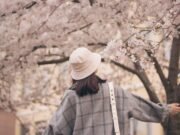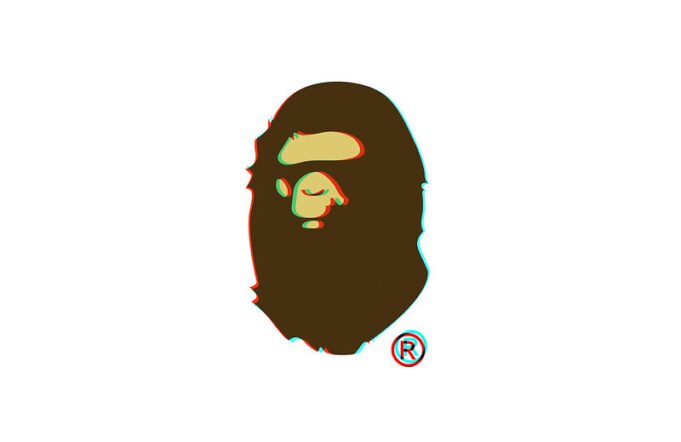From humble beginnings in Harajuku, Japan, A Bathing Ape has risen to become one of the most recognizable and influential streetwear brands in the world. Known for its iconic ape head logo and bold, graphic designs, A Bathing Ape has captured the hearts of streetwear enthusiasts and fashion icons alike. Join us as we explore the history, products, influence, culture, and style that define this pioneering streetwear label.
A Bathing Ape History
The Origins of A Bathing Ape
A Bathing Ape, often abbreviated as BAPE, was founded in 1993 by Japanese DJ and fashion designer Nigo. As a prominent figure in Tokyo’s hip-hop scene, Nigo was inspired by the streetwear brands coming out of New York, like Stussy. He wanted to create a Japanese streetwear label that embodied the unique aesthetic and culture of Tokyo’s Harajuku district. The name “A Bathing Ape” references the Japanese saying “a bathing ape in lukewarm water,” referring to the brand’s goal of being complacent and relaxed despite success.
In 1993, Nigo opened the first A Bathing Ape store in a small building in Harajuku. The brand’s debut collection featured graphic T-shirts, hoodies, and jackets adorned with Nigo’s iconic ape head logo. The bold, rebellious designs stood out in Japan’s fashion landscape, and soon gained a cult following among Japanese youth culture. As A Bathing Ape continued to grow throughout the 90s, it cemented itself as one of the most influential streetwear brands emerging from Harajuku.
A Bathing Ape’s Rise to Prominence
Throughout the late 90s and early 2000s, A Bathing Ape steadily expanded beyond its Harajuku roots to gain international recognition. Nigo collaborated with prominent artists and designers like Pharrell Williams to create limited edition “BAPEsta” sneakers, which became highly coveted fashion statements. A Bathing Ape was one of the first brands to pioneer the trend of limited edition “capsule” collections, building hype around its drops.
As celebrities and stylists began to take notice of the brand, A Bathing Ape became a staple in hip-hop fashion. Notable figures like Kanye West, Jay Z, and the Beastie Boys sported the brand in music videos and public appearances. Collaborations with brands like Pepsi, Nintendo, and Adidas further propelled A Bathing Ape into the mainstream. Flagship store openings in cities like New York, Paris, and London cemented the brand’s global reach. By the early 2000s, the ape head logo had become a recognized symbol of streetwear cool.
A Bathing Ape’s Impact on the Streetwear Industry
A Bathing Ape played a major role in shaping streetwear as we know it today. The brand pioneered limited edition drops, artist collaborations, and the intersection of music and fashion. A Bathing Ape also paved the way for other prominent Japanese streetwear labels like Undercover and WTAPS. Its graphic tees featuring pop culture references had a huge influence on modern streetwear graphics.
Above all, A Bathing Ape introduced a generation to the unique creative energy of Japanese street fashion. It launched Harajuku’s prominence on the global streetwear stage. The brand’s success story inspired other young entrepreneurs to launch their own streetwear labels. By boldly redefining Japanese fashion codes, A Bathing Ape demonstrated the power of innovative design and subcultural style.
A Bathing Ape Founder: Nigo
Nigo: The Visionary Behind A Bathing Ape
A Bathing Ape reflects the creative vision of its founder, Nigo. Born Tomoaki Nagao in 1970, Nigo immersed himself in hip-hop culture as a rebellious teenager in Tokyo. After studying graphic design at college, he became a fixture in Tokyo’s club scene as a DJ. In 1988, Nigo joined the Harajuku vintage shop Nowhere, where he learned the ropes of designing, producing, and marketing apparel.
With this background in music, design, and street culture, Nigo possessed the perfect blend of skills to launch A Bathing Ape. He brought an avant-garde perspective to streetwear, inspired by everything from sci-fi movies to Planet of the Apes. Nigo took Harajuku’s unique energy and reinterpreted it in a bold, graffiti-inspired graphic style that appealed to Japanese youth.
Nigo’s Creative Vision and Inspiration
Nigo drew from a diverse range of influences when conceptualizing A Bathing Ape. The brand’s name was inspired by the 1968 film Planet of the Apes, while its logo originated from a 1981 Japanese children’s shirt. Nigo also found inspiration in New York hip-hop streetwear, sci-fi films, anime, and vintage Americana.
By blending all these influences with a distinctly Japanese perspective, Nigo created a brand identity like no other. A Bathing Ape stood out with its irreverent use of pop culture iconography, bold typefaces, and surreal graphics. Nigo also pioneered the trend of limited edition capsules and collaborations in streetwear. His creative risks took the industry by storm.
Nigo’s Legacy in the Fashion World
Through A Bathing Ape, Nigo redefined the possibilities of streetwear and pioneered a new breed of Japanese fashion. He demonstrated how graphics, music, and subcultures could merge to create a powerful aesthetic. Nigo also paved the way for other iconic Japanese streetwear brands and designers.
In 2011, Nigo stepped down as head designer of A Bathing Ape to focus on new ventures. However, his creative legacy continues to influence streetwear today. He maintains collaborations with brands like Uniqlo, Louis Vuitton, and Adidas. Nigo’s vision catalyzed a streetwear revolution that opened the doors for other avant-garde Japanese labels. His designs will forever be etched into streetwear history.
A Bathing Ape Products
A Bathing Ape’s Signature Style
A Bathing Ape is renowned for its bold graphics, rebellious designs, and streetwear classics. Some of the brand’s signature pieces include:
- Graphic tees: Short sleeve crewnecks featuring pop culture motifs like apes, sharks, and sci-fi imagery. These vibrant tees epitomize the BAPE design aesthetic.
- Camo prints: Camouflage printed hoodies, jackets, pants, and more, often in the brand’s signature “Ape Camo” print. This military-inspired pattern adds edge.
- Ape Head logo: T-shirts, hats, and sweaters branded with A Bathing Ape’s iconic ape skull logo. This motif appears across many designs.
- BAPEsta sneakers: Patent leather low-top sneakers handmade in Italy, inspired by Nike Air Force 1s. Known for their limited editions.
- Shark hoodies: Hoodies featuring a shark face graphic with teeth on the hood. This quirky hoodie is a fan favorite.
- Baby Milo: A Bathing Ape’s cute mascot character featured on tees and accessories for kids and adults. Baby Milo’s sweet contrast with A Bathing Ape’s grit adds appeal.
A Bathing Ape’s Collaborations
A Bathing Ape is renowned for its show-stopping collaborations with artists, musicians, and brands. Some of the most coveted include:
- BAPEsta sneakers: Limited edition BAPEsta designs with rappers like Pharrell Williams, Kanye West, and Wiz Khalifa. These artist collabs sparked global hype.
- Pepsi: Capsule collections featuring BAPE’s ape motif on Pepsi’s classic logo and branding. This crossover captivated streetwear fans.
- Nintendo: Playful collections blending BAPE camo and graphics with Super Mario Bros and other Nintendo games. These elevated streetwear with pop culture nostalgia.
- Adidas: Sportswear collections merging BAPE’s rebel aesthetic with Adidas classics like track jackets and Superstar sneakers. A powerful streetwear alliance.
- UNDFTD: Bold co-designed apparel and footwear that blends both brands’ signature styles. Two streetwear pioneers uniting their creative forces.
A Bathing Ape’s Diversifying Product Range
While apparel remains at the core of A Bathing Ape, the brand has expanded into a wide range of products:
- Accessories: From sturdy backpacks to leather wallets, bags and cases stamped with BAPE motifs.
- Footwear: Expanding beyond BAPEsta sneakers into sandals, boots, and other statement shoes.
- Homewares: Quirky home accessories and furniture with BAPE styling, from blankets to desk items.
- Grooming: Body care and cosmetics for men and women, covering fragrances, skincare, haircare, and more.
- Food & beverage: Limited edition BAPE-branded food and drinks, like energy drinks and chocolate bars.
- Toys: Collectible figures, plushes, model kits, and novelty items bearing the BAPE logo and mascots.
This broadening product world allows A Bathing Ape to permeate all aspects of its fans’ lifestyles. The brand’s signature graphics and irreverent themes translate seamlessly across categories.
A Bathing Ape Influence
A Bathing Ape’s Impact on Popular Culture
A Bathing Ape has carved out a unique space at the intersection of streetwear, music, and pop culture. The brand has impacted popular culture in several ways:
- Co-signing hip-hop artists: By dressing prominent rappers in the 2000s, BAPE cemented its status as part of hip-hop fashion. This exposure boosted its popularity globally.
- Influencing graphic T-shirt design: A Bathing Ape’s bold use of motifs like apes and sharks shaped graphic tee trends in streetwear and beyond. Its iconography is now widely recognized.
- Redefining brand collaborations: BAPE’s artist and brand collabs set the template for future streetwear partnerships. Its crossovers built excitement and hype.
- Inspiring anime streetwear: BAPE’s anime-inspired mascot Baby Milo helped usher in anime and manga influences in street fashion. This opened new creative doors.
- Birthing collector culture: The brand pioneered limited edition capsules and “drop” releases in streetwear. This built a thriving sneakerhead and streetwear collector community.
A Bathing Ape’s Global Reach
From Harajuku to Hollywood, A Bathing Ape has expanded worldwide:
- Japan: With over a dozen stores nationwide, BAPE dominates streetwear in its home country. Its Harajuku flagship store is a destination for fans.
- North America: BAPE is stocked at prominent retailers from New York to LA. It has flagship stores in cities like New York, Los Angeles, and Toronto.
- Europe: In fashion capitals like London, Paris, and Berlin, BAPE is available at leading boutiques and department stores.
- Asia: BAPE has an extensive presence across Asia, with locations in Seoul, Shanghai, Hong Kong, and more. Its aesthetic resonates strongly across the continent.
- Celebrity following: The brand has been spotted on celebrities across entertainment, music, and sports – from Pharrell to Kanye West.
This global footprint reflects BAPE’s widespread influence and versatility across markets and subcultures. From streetwear connoisseurs to hip-hop stars, the brand has cross-cultural appeal.
A Bathing Ape’s Enduring Appeal
Decades after its founding, A Bathing Ape continues to captivate audiences worldwide. Several factors contribute to its longevity:
- Strong brand identity: BAPE’s original ape head logo and camo prints are still iconic, giving the brand heritage and recognition.
- Relevant collaborations: Strategic partnerships with artists and brands help keep BAPE engaged with pop culture.
- Nostalgia factor: For many fans, BAPE triggers nostalgia for 1990s and 2000s streetwear. Vintage pieces are coveted.
- Product diversity: The brand has expanded beyond core apparel into lifestyle products with broad appeal.
- Global hype: As a pioneer of limited edition drops, BAPE continually generates buzz around new releases.
- Harajuku heritage: BAPE’s roots in Tokyo street culture give it authenticity that never fades.
This perfect storm of street cred, nostalgia, and business savvy keeps veteran fans loyal while also engaging new audiences.
A Bathing Ape Culture
A Bathing Ape’s Connection to Japanese Streetwear
- Japanese pop art: The brand’s bold graphics and color blocking mirror Japan’s pop art movement, as seen in anime and manga.
- Tokyo streetwear pioneer: In the 1990s, A Bathing Ape helped put Tokyo streetwear on the map globally and inspire other Japanese streetwear labels.
- Yankii style influence: BAPE’s embrace of neon colors, rebellious motifs, and eccentricity aligns with Japan’s ‘yankii’ style youth subculture.
- Enduring Harajuku presence: The brand’s flagship Harajuku store preserves its connection to the district’s creative scene. Drops still cause lines around the block.
A Bathing Ape’s Cult Following
A Bathing Ape has cultivated a devoted cult following that religiously collects the brand’s products and displays brand loyalty. Key traits of BAPE fans include:
- Lineup for releases: Diehard fans will camp out for hours or days to get their hands on limited BAPE pieces.
- Social media networks: On platforms like Instagram and forums, BAPE communities share news, coordinate meetups, and showcase collections.
- Connoisseur mindset: Fans meticulously track down rare vintage BAPE items and limited collaborations to expand their collections.
- Showing off pieces: Wearing bold BAPE shark hoodies and head-to-toe camo prints displays brand allegiance. Coordinating ‘fits is a sport.
- Trading and reselling: Fans buy and sell rare BAPE items for premium prices on secondary markets. Unique pieces become valued commodities.
- Tattoo dedication: Some superfans get tattoos of BAPE designs like the ape head logo to demonstrate lifelong loyalty to the brand.
This passionate community keeps the BAPE movement alive decades later. The brand has mastered the art of building hype and loyalty around releases.
A Bathing Ape’s Lifestyle Brand Appeal
Beyond just clothing, A Bathing Ape has expanded into an aspirational lifestyle brand. The label represents:
- Music culture: BAPE is intertwined with hip-hop and hosts live music events. Wearing BAPE lets fans rep their music style.
- Collector culture: For sneakerheads and streetwear collectors, the hunt for rare BAPE is a hobby and lifestyle.
- Urban edge: With its skate, hip-hop, and graffiti touches, BAPE carries street cred and attitude. Fans want to channel this edgy aesthetic.
- Japanese street style: Donning BAPE lets wearers telegraph their affinity for Japanese street fashion and culture.
- Pop art appeal: The brand’s playful use of color and pop motifs adds artistic expression. Fans use BAPE to show their creative spirit.
- Rebellion: The brand maintains its anti-establishment, youthful roots. Fans are drawn to BAPE’s irreverent vibe.
By transcending fashion to represent creativity, music, and subcultures, BAPE inspires lifestyle aspirations. Fans adopt the brand’s ethos.
A Bathing Ape Style
Deconstructing the A Bathing Ape Aesthetic
A Bathing Ape has a highly distinctive aesthetic defined by:
- Bold graphics: Vibrant, large prints and motifs like apes and sharks make pieces eye-catching. Graphic tees and hoodies are statement pieces.
- Camo overload: The brand’s custom camo prints in colors like green, pink, blue, and gold have become iconic. Camo jackets and pants are wardrobe staples.
- Japanese text: BAPE often incorporates Japanese text and BAPE’s own alphabet. This ties designs back to the brand’s Tokyo roots.
- Ape Head logo: The prominent placement of the ape skull logo brands pieces and shows BAPE pride. It’s recognizable from a distance.
- Distressed details: Intentionally worn and faded finishes give items a vintage, grungy appeal.
- Neon brights: Vivid neon hues in yellow, green, orange and pink provide pops of color. These energetic tones are straight out of Tokyo streetwear.
Styling A Bathing Ape Pieces
A Bathing Ape’s loud statement pieces are best complemented by more muted items. Useful styling tips include:
- Let BAPE shine: Avoid busy patterns and let BAPE graphics take center stage. Plain tees, jeans, and simple sneakers balance the look.
- Color coordinate: Match colors in BAPE camo prints with jackets, pants, or accessories for cohesive looks. A colorblocked outfit makes camo pop.
- Mix streetwear classics: Pair graphic BAPE tees with staples like jeans, hoodies, and baseball caps for casual streetstyle.
- Layer with basics: Under a BAPE graphic hoodie or bomber jacket, wear a basic tee. This creates contrast.
- Baby Milo for subtlety: For a more low-key vibe, Baby Milo tees and accessories add BAPE flair more discreetly.
- Accessories: BAPE sneakers, snapbacks, and bags pull a look together. Ape head earrings and necklaces show pride.
A Bathing Ape’s Legacy in Streetwear Fashion
A Bathing Ape’s bold use of color, graphics, and logos created a blueprint for modern streetwear. The brand proved that creative risks and irreverent styling could captivate audiences. By bridging music, art, and fashion, BAPE paved the way for an explosion of streetwear labels worldwide. Its iconic designs will continue inspiring new generations of creators and collectors. Through staying true to its subcultural roots while expanding strategically, A Bathing Ape will no doubt continue making its mark on fashion for decades to come.
Conclusion
A Bathing Ape has come a long way from its humble Harajuku beginnings. Through innovative graphics, cultural collaborations, and strategic hype-building, the brand has secured its position as one of the most influential streetwear labels worldwide. Nigo’s creative vision redefined fashion by blending Japanese pop culture, music, and attitude in a bold new way.
Today, A Bathing Ape is more than just a clothing label – it’s a culture, community, and lifestyle. The brand’s enduring connection to youth culture and self-expression continues to win over new fans. As A Bathing Ape evolves in step with the times, it stays true to its avant-garde roots. The iconic ape head logo will no doubt be leaving its mark on fashion history for years to come. A Bathing Ape’s story is a testament to the power of creative subversion and proves that streetwear can change the world.



































